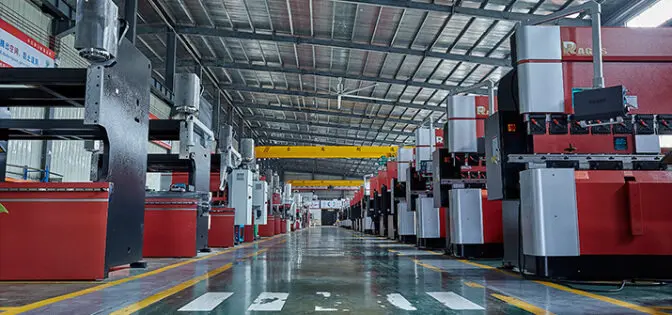Profilo Aziendale
Anyang Younengde Electric Co., Ltd è un'impresa ad alta tecnologia specializzata nella ricerca e sviluppo, progettazione, produzione, installazione e messa in servizio di attrezzature di fusione al plasma DC , alimentazione DC ad alta potenza e rifiuti solidi / pericolosi rifiuti non tossici di trattamento non tossico . La nostra azienda ha ottenuto 35 nuovi brevetti tecnici pratici su attrezzature di fusione al plasma DC. La capacità dell'attrezzatura va da 50kVA a 30000KVA. Il processo di estrazione e arricchimento di metalli rari e preziosi da minerali grezzi, catalizzatori e rifiuti solidi industriali è maturo con alta resa. La resa del silicio metallico e il 75 # Ferrosilicon è ricca nella fusione della silice. Il tasso di recupero dei metalli non ferrosi è elevato quando i circuiti di rifiuti vengono sciolti direttamente. Il processo di fusione di alluminato di calcio è maturo. La nostra azienda ha effettuato cooperazione professionale e scambi tecnici con molte imprese e unità in patria e all'estero e ha fornito prodotti di alta qualità. Elenco dei casi di prodotto Institute of Mechanics of Chinese Academy of Sciences (Cooperazione dei servizi tecnici) Suzhou Institute of Design and Research (Cooperazione dei servizi tecnici) Anyang Longxin Silicon Industry Co., Ltd (Furnace DC in polvere di silicio m e etallico) Hubei Boxin New Materials Technology Co., Ltd (fornace DC con fusione di silicio metallico) Danjiangkou Huiyuan Hejin Co., Ltd (fornace DC di fusione di silicio metallico) Pechino Central Iron & Steel Research Institute ( fornace d'acciaio) Dalian Wilte Steel Co., Ltd (fornace DC sperimentale di ferro in titanio vanadio) Henan Liyuan Group Co., Ltd (fornace di ferrolloy) Wu'an Yuhua Steel Group Co., Ltd (fornace DC in lega di alluminio in acciaio) Tangshan Ganglu Steel Group Co., Ltd (fornace DC in lega di alluminio in acciaio) Heil Ongjiang Jianghui Huanbao Technology Co., Ltd ( Ferronickel Letre DC Furnace) Guangdong Guangqing Jinshu Technology Co., Ltd ( Ferronickel Letre DC Furnace) Henan Jiaozuo Mr. Zuo ( Mforno DC Ulti-Function) Rizhao Zhenghong Yanchuang New Materials Co., Ltd (Ferronickel lega DC Furnace) Fujian Anxi Ansheng Mining Co., Ltd (fornace DC di Multi -Function) Liaoyangshi TaiziHequ Boyi Zhuzaochang (fornace DC di scorie di zinco di rifiuti) Chongqing Saiyadi Energy Technology Co., Ltd (fornace DC in ferro di ferratura del fango rosso) Liaoning Fuyun Refractory Co., Ltd (fornace DC in alluminato di calcio ) HUOLUNY GERUN HUANBAO TECNOLOGIA CO., LTD (fornace DC in alluminato di calcio ) HUOLULUOLE LIFENGLVYE CO., LTD ( fornace DC in alluminato di calcio ) Dalian Yishun LVSE Technology Co., Ltd (fornace DC in alluminato di calcio ) Danjiangkoushi Wanji Abrasive Materials Co., Ltd (Furnace DC Corundum ) Jiangsu Nantong Taiyang Technology Co., Ltd ( fornace DC in lega di rame berillio ) Jiangsu Nantong Taiyang Technology Co., Ltd ( fornace DC in lega di rame berillio ) Indonesia PT Metalindo Makmur Mandiri (Test DC Furnace) Korea HF Metal Trade Co., Ltd (fornace DC PCB) Guangdong Meizhou Mr. Fu (fornace DC PCB) Guizhou Yixiang Kuangye (Gruppo) Zhenyuan Runda Co., Ltd (fornace DC Metals Precious) Guangxi Zhongwu Kuangye Co., Ltd (fornace DC metalli preziosi) Longyan Changyu New Material Technology Co., Ltd (Forno DC Metals DC) Hubei Huanggang Mr. Zhao (fornace DC Metals preziosi) Henan Yihui Jinshu Technology Co., Ltd ( fornace DC a tre vie di fusione catalitica ) Shanghai Yudun Xincailiao Technology Co., Ltd (fornace DC a tre vie di fusione catalitica ) Zhejiang Qike Shengwu Technology Co., Ltd (fornace DC a tre vie di fusione catalitica ) Zhejiang Metallurgical Research Institute (fornace DC a tritatura a tre vie ) Hubei Zhongyuan Chucheng Environmental Protection Technology Co., Ltd (fornace DC a tre vie di fusione catalitica ) Huaian Zhongshun Environmental Protection Technology Co., Ltd (due serie di fornace DC a tre vie di fusione catalitica ) M Inshan Huanneng Hi-Tech Gufen Co., Ltd (forno DC Test del minerale di lead) Zhejiang Teli Renewable Resources Co., Ltd (Fornace DC Recupero di fanghi di rame) Keyuan Environmental Equipment Co., Ltd ( Forno DC DC Smaltment DC ) Stazione di incenerimento dei rifiuti di Guanyinshan ( Smalti di smaltimento innocuo di cenere ) Chaozhou Dongsheng Environmental Protection Technology Co., Ltd ( Furnace DC in lana R ock ) YONGXING CH Ang Long Environmental Protection Technology Co., Ltd (Fornace DC di fusione e riciclaggio delle scorie di stagno) Kunming Dingbang Technology Co., Ltd ( fornace DC di fusione di stagno)











